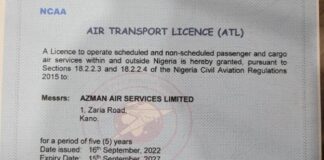Oil Climbs as Geopolitical Risks Worsen
Oil prices climbed again on Friday as geopolitical risks continued to grow. ICE Brent price rose by 2.09% to $79.03 per barrel from the closing price of $77.41. Also, West Texas Intermediate (WTI) increased by 2.11% to $73.54 per barrel from $72.02 per barrel.
Oil prices continue to climb amid the escalation in attacks in the Middle East. Houthis in Yemen have targeted commercial ships in retaliation for Israel’s attacks on Gaza since late last year. In response, many shipping companies decided to stop their voyages in the Red Sea, causing concern about trade disruptions.
Late Thursday night, the US and UK carried out strikes on multiple Houthi targets in Yemen in what US President Joe Biden said was ‘in direct response to unprecedented Houthi attacks against international maritime vessels.’
Biden said the Houthi attacks that prompted the allied strikes ‘have endangered US personnel, civilian mariners and our partners, jeopardized trade and threatened freedom of navigation.’
‘I will not hesitate to direct further measures to protect our people and the free flow of international commerce as necessary,’ Biden added. The Houthis have carried out 27 attacks in the Red Sea since Nov. 19, the US military said earlier Thursday.
While Houthi leader Ali al-Qahoum said early Friday that Yemen had responded to the ‘American aggression’ on American and British warships in the Red Sea, a senior US military official denied these Houthi claims of retaliatory attacks, saying ‘we have not seen a response from the Houthis at this time.’
Adding to the tension is the fact that Iran has also seized an oil tanker in the Gulf of Oman, which is very near the Strait of Hormuz, a critical chokepoint for oil flows. This will be a worry for oil markets if incidents like this become more regular, ING commodities strategists said in a note.
More than 20 million barrels per day of oil moves through the Strait of Hormuz, which is equivalent to around 20% of global consumption, according to ING note.
Analysts noted that significant disruptions to oil flows in this region will be much more alarming for markets. And unlike the Red Sea, where vessels can divert and take a longer route around Southern Africa, there is little other alternative for ships going through the Strait of Hormuz. NBS And The Task of Delivering Reliable National Data
The Saudis and the UAE have pipelines with a combined capacity of around 6.5m b/d, which avoids the Strait of Hormuz, but the rest of the oil flows would be at risk.
“For now, we believe the risk of significant disruption to oil flows from the Persian Gulf is low, but it is certainly worth keeping an eye on, given the potential impact it could have on oil supply and prices”.
While oil prices were fairly well supported yesterday, the move was fairly modest given these developments. ICE Brent settled just 0.79% higher on the day.
Possibly, the higher-than-expected US CPI print could have held oil back as it suggests that maybe we will not see the Fed cutting rates as soon as many in the market expect.
The latest data from Insights Global shows that refined product inventories in the ARA region increased by 224kt over the last week to 5.29mt. The increase was predominantly driven by gasoil stocks, which rose by 176kt to 1.96mt.
However, gasoil stocks in the region still remain well below the 5-year average for this time of year. Elsewhere, data from Singapore show that oil product stocks fell by 262k barrels to 42.4m barrels.




























































































